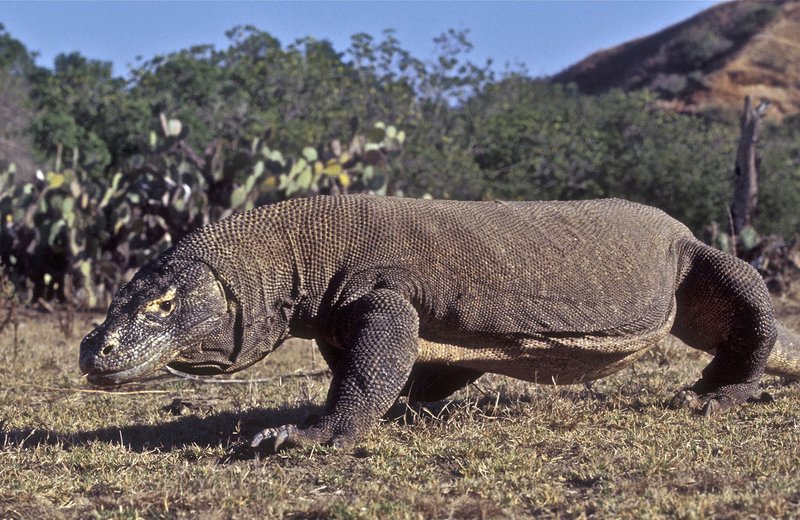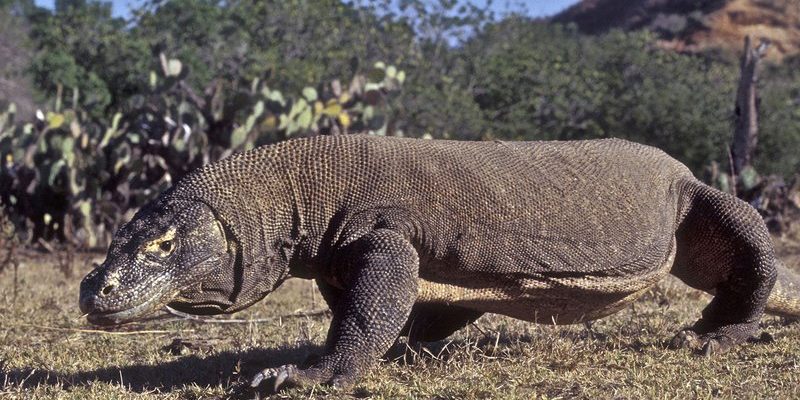
Identifying a monitor lizard in the wild involves more than just spotting a big lizard. It’s about understanding their physical traits, behaviors, and habitats. From their long, powerful tails to their forked tongues, monitor lizards are truly distinctive. In this article, we’ll dive deep into how to recognize these remarkable animals, ensuring your next outdoor adventure is not just fun but also educational.
Characteristics of Monitor Lizards
When you’re trying to identify a monitor lizard, the first thing to consider is their physical characteristics. Monitor lizards come in various species, but they share some common traits. Generally, they have elongated bodies, powerful legs, and long tails that can be nearly as long as their bodies.
The skin of a monitor lizard is usually rough and covered in scales. Depending on the species, the coloration can range from browns and greens to more vibrant hues. For instance, the Asian Water Monitor is known for its dark body adorned with lighter spots, while the Savannah Monitor has a more muted, brownish appearance. And here’s the thing: their size can vary dramatically! While some species might be only a couple of feet long, others can grow over seven feet.
Another key feature to look for is their forked tongue. This may remind you of snakes, but monitor lizards use their tongues to “taste” the air, a crucial skill for locating food and sensing their environment. So next time you spot one, pay attention to how they flick that tongue in and out.
Common Species of Monitor Lizards
As you explore different habitats, you’ll encounter various species of monitor lizards. Some of the most common include:
- Asian Water Monitor: Found near water bodies, these lizards are excellent swimmers and can often be seen basking on rocks.
- Savannah Monitor: Common in Africa, they prefer dry savannas and have a more robust body structure.
- Niloticus Monitor: Known for their bold colors and patterns, they inhabit areas with plenty of foliage.
- Komodo Dragon: The largest of all monitor lizards, they are native to a few Indonesian islands and are famous for their size and predatory skills.
While these species share the monitor lizard family, each has unique adaptations that help them thrive in their environments. For instance, the Asian Water Monitor loves to be near water, while the Savannah Monitor prefers arid regions.
Habitat Preferences
Understanding where monitor lizards live can greatly help in identifying them. Habitats vary by species, but generally, you’ll find these lizards in warm, sunny places. Monitor lizards are often found in tropical and subtropical regions, but different species adapt to various environments.
The Asian Water Monitor, for example, prefers areas close to rivers, lakes, or swamps. You might spot them lounging on a rock near the water’s edge. On the other hand, the Savannah Monitor thrives in dry, open habitats where it can dig burrows and find shelter. These monitors are also terrestrial, meaning they spend most of their time on the ground rather than climbing trees.
When exploring potential habitats, keep an eye out for signs of monitor lizards, such as tracks in the sand or disturbances in vegetation where they may have recently passed through.
Behavioral Traits
A monitor lizard’s behavior can be just as telling as its physical traits. These lizards are known for their intelligence, which makes them fascinating to observe. For example, they often display curiosity towards humans and are usually not as skittish as other reptiles. You might find one basking in the sun, seemingly unfazed by nearby hikers.
Another interesting behavior is their defensive tactics. When threatened, some species can stand their ground and hiss, puffing up their bodies to appear larger. Others may quickly flee to a nearby tree or burrow for safety. This boldness can sometimes make for an exciting encounter!
Monitor lizards are also active hunters. They primarily feed on insects, small mammals, and even other reptiles. Watching them hunt is a thrilling experience. You might see them stalking their prey or using their sharp claws to dig into the ground for food.
Safe Observation Tips
Spotting a monitor lizard in the wild can be an exhilarating experience, but safety is key. Here are some tips to keep in mind for safe observation:
- Maintain a Distance: Always keep a safe distance to avoid startling the lizard. Getting too close can stress them out and lead to erratic behavior.
- Stay Calm: If you encounter a monitor lizard, try to remain calm. Sudden movements can provoke them.
- Observe Quietly: Use binoculars for a closer view without intruding on their space.
- Respect Their Territory: Remember that you are in their home. Avoid disturbing their habitat and remain on marked trails.
By following these tips, you can enjoy observing monitor lizards while ensuring their safety and yours. After all, the goal is to appreciate these magnificent creatures without interfering with their natural behavior.
Conservation Status and Importance
Monitor lizards play vital roles in their ecosystems. They help control populations of insects and small animals, proving essential for maintaining ecological balance. However, many species face threats from habitat destruction and hunting. It’s crucial to understand their conservation status and the importance of protecting their habitats.
Some species, like the Komodo Dragon, are classified as vulnerable due to their limited range and declining populations. As a wildlife enthusiast, educating yourself about these threats can help promote awareness and conservation efforts.
You might consider supporting local wildlife organizations or participating in initiatives that aim to protect these stunning reptiles. Every small effort counts, and being informed is the first step towards making a difference.
Identifying a monitor lizard in the wild is not just about recognizing a big lizard; it’s an experience that deepens your appreciation for nature. From their unique characteristics and behaviors to their vital roles in the ecosystem, monitor lizards are fascinating creatures worthy of our respect and admiration.
The next time you’re out exploring, keep an eye out for these remarkable reptiles. With a bit of patience and knowledge, you might just spot one in its natural habitat. Remember, every encounter is an opportunity to learn and connect with nature—so enjoy the journey!

